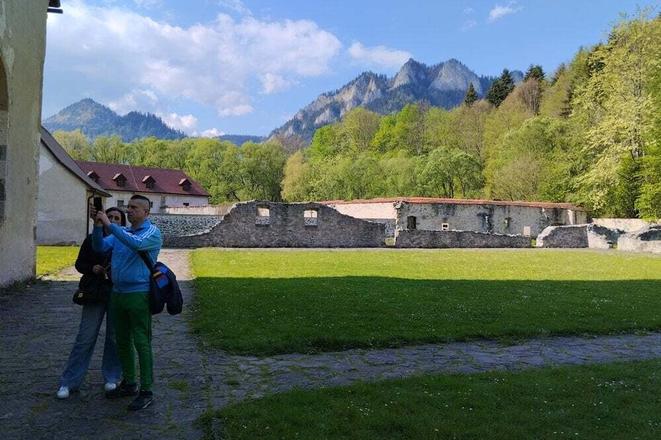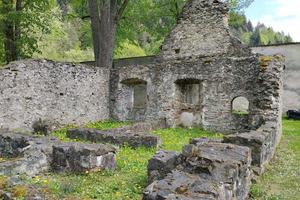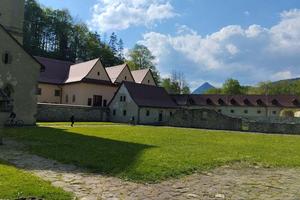The museum in Červený Kláštor (Red Monastery), eastern Slovakia, will take you back to the times when buildings for quieting the spirit and prayer served for this purpose.
A helping hand in the heart of Europe offers a travel guide of Slovakia.
Those who find themselves enchanted by corridors can experience a monastic life for themselves. Leave the world and technology at home and literally go back in time.
How it looked in the ancient times of school teaching, how monks lived according to old rules, how beer tasted; all this is shown in a unique exhibition in the newly opened museum premises in the monastery.
Transition to another century
"We returned the monastery to its former function. There was a theological school, monks brewed beer and mead here, and healed the people from the Zamagurie region. We wanted to bring back what was already here and then disappeared for some time," explains Marcela Palubová, an employee of the Červený Kláštor Museum.
Even though the former orders that resided here were strict and did not normally interact with people, now this strictness has been loosened.
Actually, visitors will be offered unique opportunities. In the 14th century, the mediaeval monastery was founded by Carthusian monks. Later, Camaldul monks worked here. And in the 21st century, even "non-monks" can sleep at the monastery.
"We offer new monk rooms for visitors, where they can get a taste of monastic life," explains Marcela Palubová. "We are preparing detox stays, where visitors will have the opportunity to delve a little deeper into themselves, disconnect from the digital world and relax, meditate, and think more."
Aromatherapy courses are also planned, where people can mix their own perfume. Educational courses and workshops will be available, which will be part of the aforementioned "recuperative stays in monastic rooms".
Herbal garden
In addition to beer tastings, the monastery area also offers a number of interesting things that can interest not only history lovers, but also families with children.
The exterior of the monastery is decorated by several flower beds with herbs. These form Cyprian's herb gardens [a monk who according to legends created a flying machine - ed.], where plants intended for the production of medicines were grown.
Anyone who would like to learn about the power of herbs will find an entire exhibition dedicated to this topic inside the monastery.
The monastery offers a vast amount of information about what the monks lived on, how they dressed, what books they prayed from, what their daily life looked like. In the monastery school, children can try out what teaching was like.
Since this activity is also interactive, they don't just have to watch, but can try what it's like to write on slates. The number of interactive elements encourages the acquisition of information in various ways - in the monastery cinema or at the 3D exhibition of the area with a commentary.
It is possible to look into the mead house and the rooms of the monks, their private chapels or the local church.
©Východ Sme
Spectacular Slovakia travel guides
A helping hand in the heart of Europe thanks to the Slovakia travel guide with more than 1,000 photos and hundreds of tourist spots.
Our detailed travel guide to the Tatras introduces you to the whole region around the Tatra mountains, including attractions on the Polish side.
Lost in Bratislava? It's impossible with our City Guide!
Selected travel articles, podcasts, travellers' needs as well as other guides dedicated to Nitra, Trenčín Region, Trnava Region and Žilina Region.




